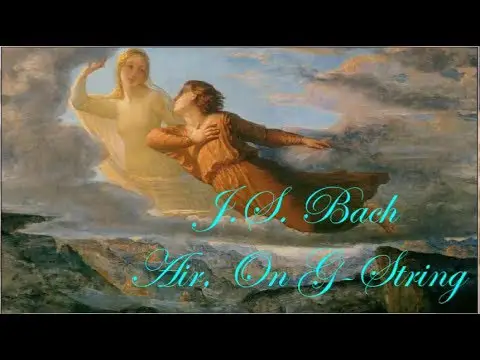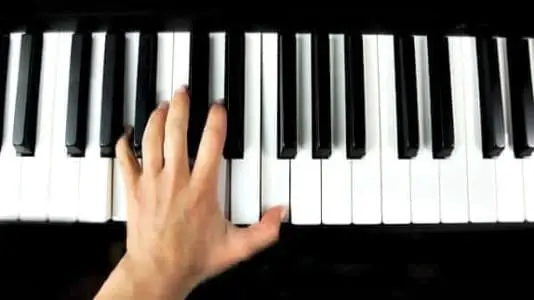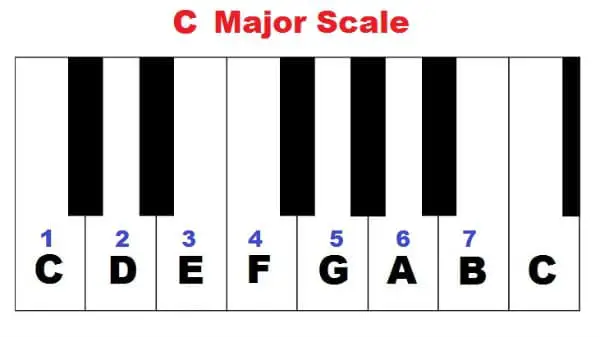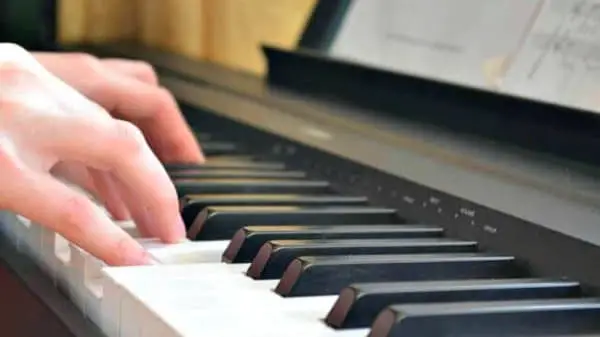- Home
- Piano Chords
- Piano Chord Progressions
Unforgettable Piano Chord Progressions
This article may contain compensated links. Please read the disclosure for more info.
Here are some fun ways to combine chords in common piano chord progressions to create well known accompaniment styles.
You could also use the progressions as foundations for your own piano improvisations!
What Are Chord Progressions?
If you play a selection of chords in a certain order, it is called a chord progression.
With different types of progressions you can play certain styles, as the blues, or “imitate” a typical style like the “50’s progression” below, for example.
Chords are written either as notes, or as letters and numbers. They can also be labeled with roman numerals:
 Here are the chords in a C major scale with roman numerals.
Here are the chords in a C major scale with roman numerals.The numerals represent each step in the scale, I to VII. Capitals represent major chords and small letters represent minor chords.
Common Piano Chord Progressions
Here are some really fun chord progressions to try out! Play the chords in your right hand, the root of the chord in the left (bass) and hum or sing along!
1. Three Chord, 1 4 5 Progressions
The three chord progression, (or 1 4 5 chord progression) is the most common of all. With just three chords ( I, IV and V) you can accompany almost any tune!
- I – IV - V: Try them with P. Spector/J. Barry/Greenwich’s “Da Doo Ron Ron” for example.
- I - IV - V - V: Try it with Ritchie Valens' "La Bamba". The Isley Brothers'"Twist and Shout", and The Beatles's "Lucy in the Sky with Diamonds".
- I - I - IV - V: Millie Small's "My Boy Lollipop", Paul Simon's "Diamonds on the Soles of Her Shoes".
- I - IV - I - V: Solomon Linda's “The Lion Sleeps Tonight".
- I - IV - V - IV: Chip Taylor/The Troggs' "Wild Thing".
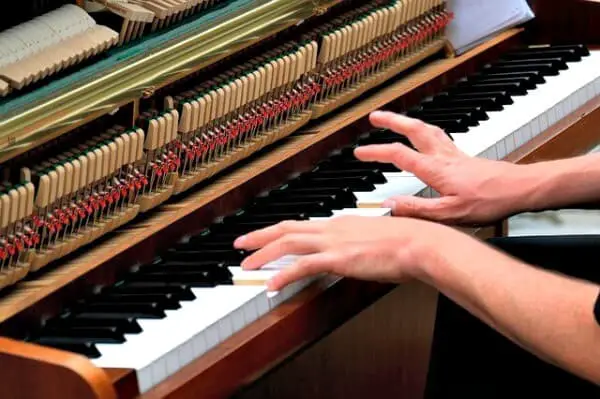
2. Four Chord Progressions
"La Folia": In D minor:
- Dm A7 Dm C F C Dm A7 // Dm A7 Dm C F C Dm A7 Dm
Using Roman Numerals in any key:
- i - V7 - i – VII – III – VII – i - V7 – // i - V7 – i – VII – III – VII – i – V7 – i
3. 12 Bar Blues Chord Progression
Make up your own blues from a blues scale, or try any early Rock n’
roll song, Like Carl Perkins’ “Blue Suede Shoes”, for example. Use the typical 12 bar Blues pattern:
I - I - I - I
IV - IV - I - I
V - IV - I - I
4. 50’s Style Progression
- I - vi - IV - V or I - vi - ii - V
It is used in: Paul Anka’s “Diana”, Rogers and Hart's "Blue Moon", Hoagy Carmichael's "Heart and Soul".
5. Pachelbel's Canon
Piano chord progressions like Pachelbel's famous canon, is actually a bass melody that is repeated over and over. Like the blues pattern you could improvise on this ostinato (a musical pattern that is repeated over and over).
- I V vi iii IV I IV V
6. Circle of Fifths Progression
This pattern moves a bit around the Circle of Fifths in a “zigzag” pattern; a fourth up, a fifth down etc.
- I - IV - vii° - iii - vi - ii - V – I
Or in minor as in the refrain from “Hello” by Lionel Richie;
- iv – VII – III – VI – II – V –i – V – i
7. Scale Progression
We’ll work with a simple C major scale to make two lovely piano chord progressions.
With your left hand, go down the C major scale (2 octaves!). This fits: Procol Harum's "A Whiter Shade of Pale". With your right, play these chords: (I is C, IV is F and V is G)
Right Hand Chords:
I--------IV--------V---------I-IV-V-V7
c-b-a-g-f-e-d-c-b-a-g-f-e- f- g- g (Left hand single notes)
Or Billy Joel’s “The Piano Man”: We could use roman numerals again, but this time I wanted to show you how it looks like with regular chord markings:
In C major: C Em/B Am C/G F C/E D7 G
For the regular chords without slash, your left hand simply plays the single notes of each chord base; C, F, A etc.
The “slash chords” you see here, lets say Em/B means that you play the chord, Em in your right hand but the left plays B !
So while your right hand plays the chords:
C Em Am C F C D7 and G
Your left will “walk down”:
c b a g f e d g
Nice, huh?
J. S Bach’s famous "Air on a G String" also has a very similar chord progression, as well as Percy Sledge's "When A Man Loves A Woman" and Bob Marley's "No Woman, No Cry".
8. Minor Piano Chord Progression
"Spanish" cadence:
- i - VII - VI - V
Play with Ray Charles' "Hit the Road, Jack".
Or as in The Animals' version of the traditional "The House of the Rising Sun":
- i - III -IV (or iv) - VI.
I hope you had fun learning these piano chord progressions!
